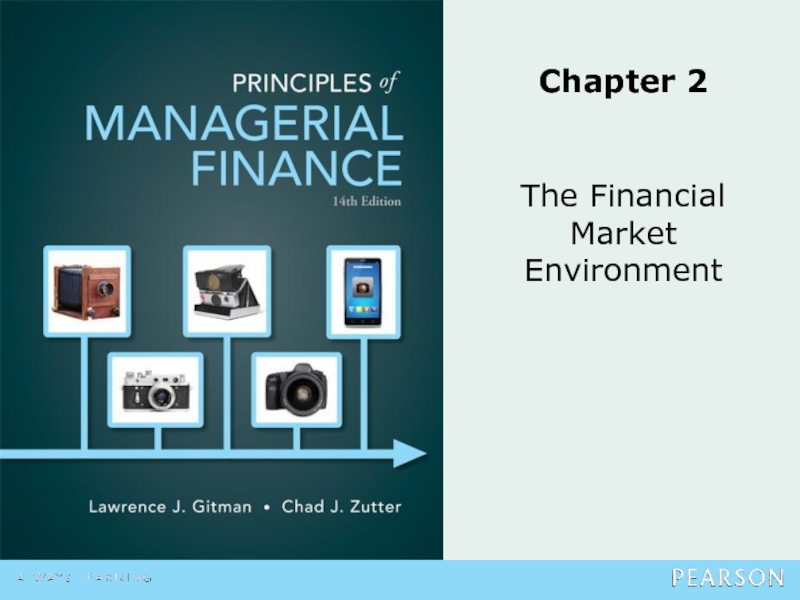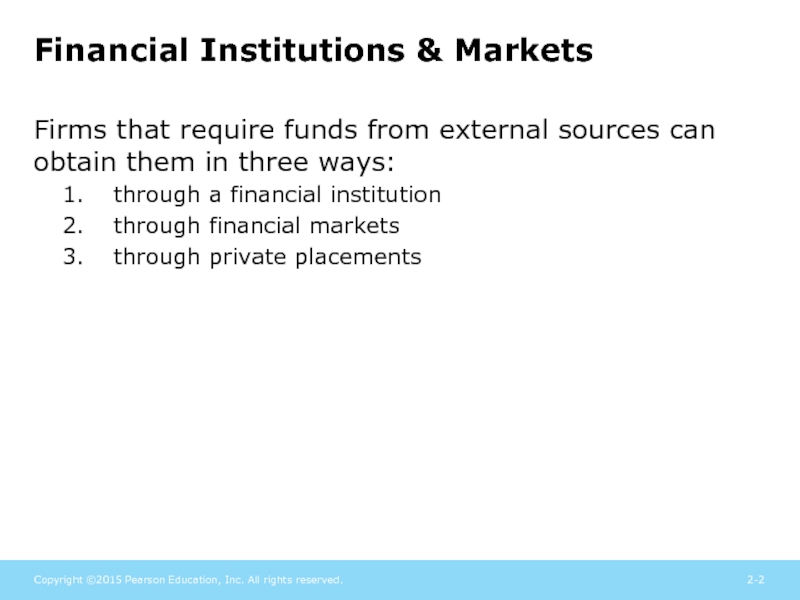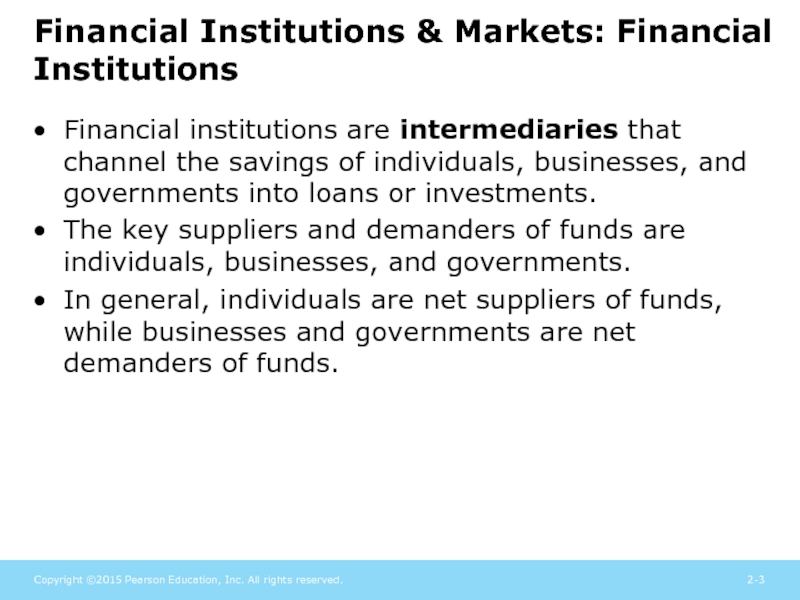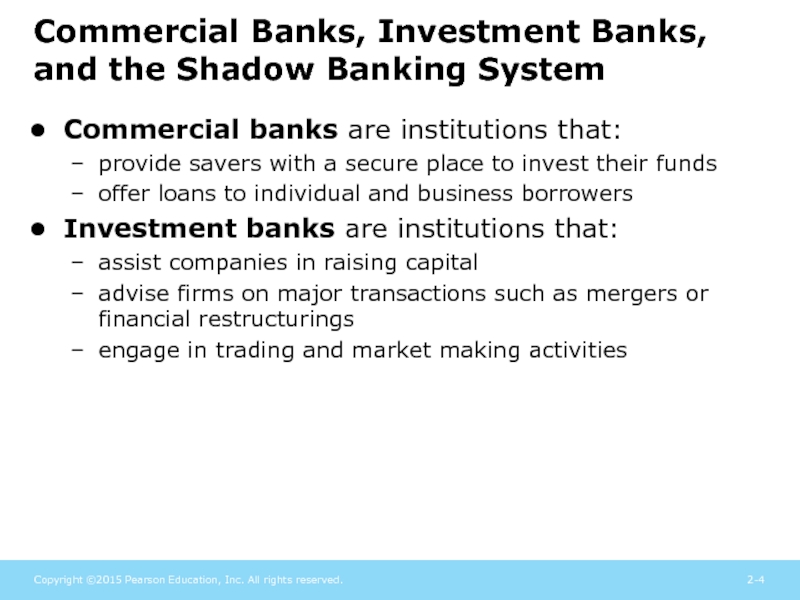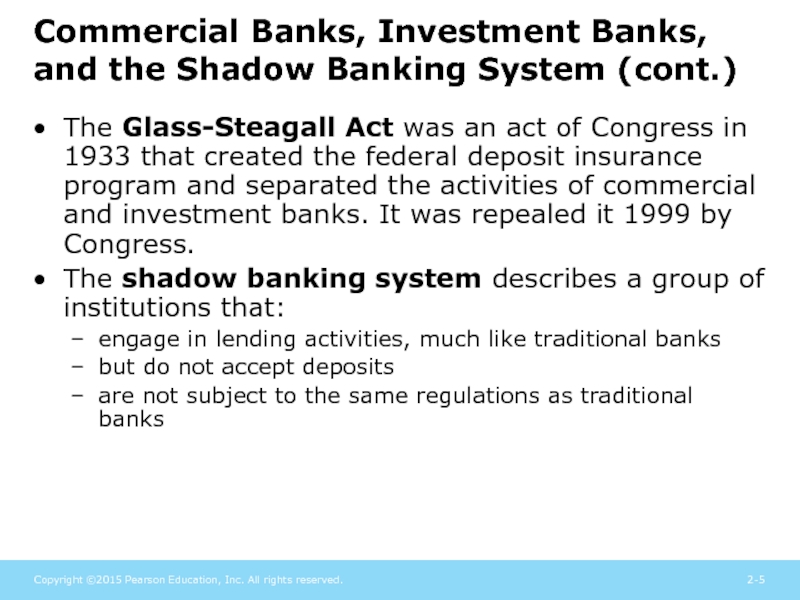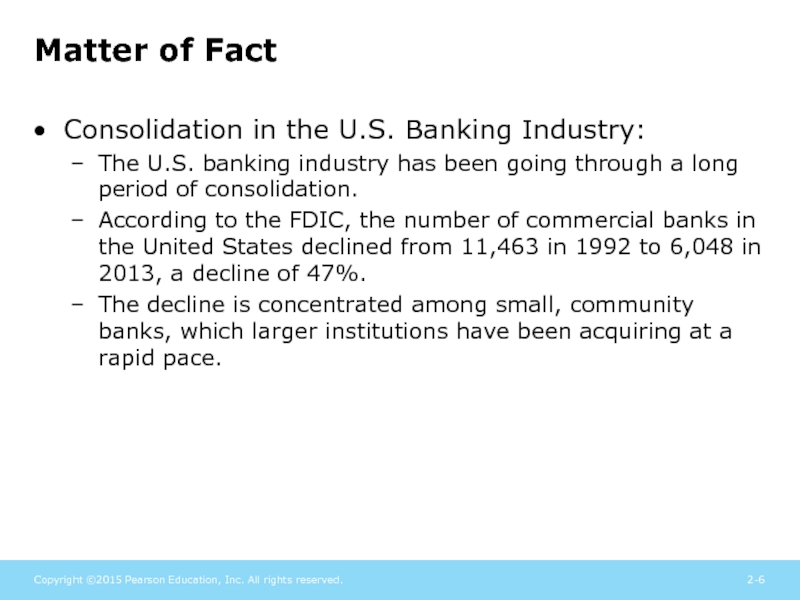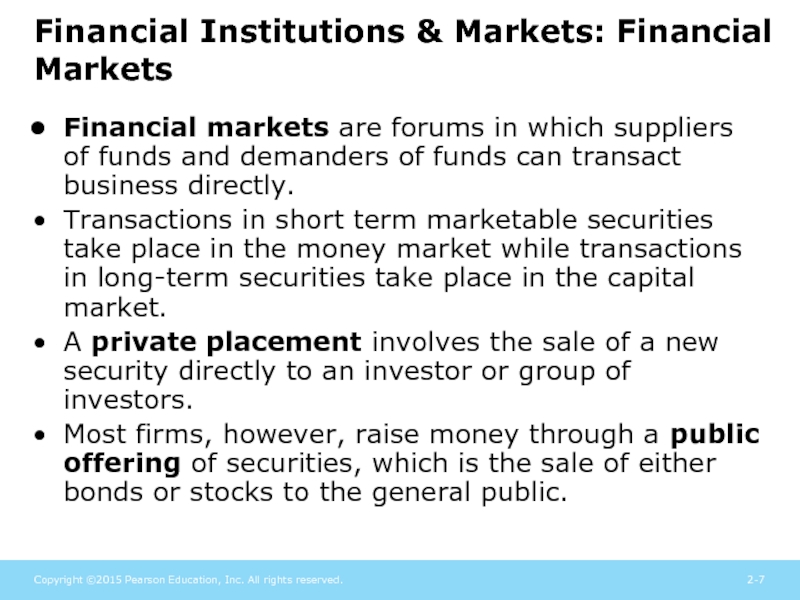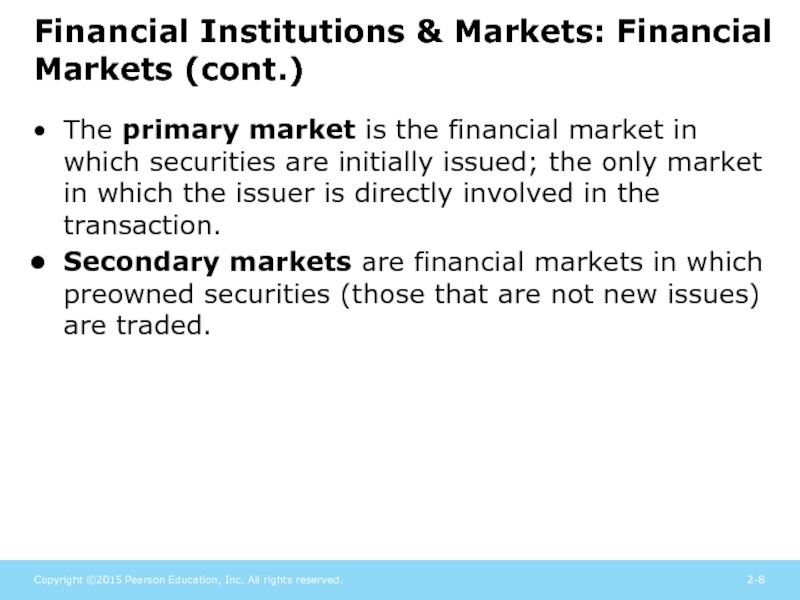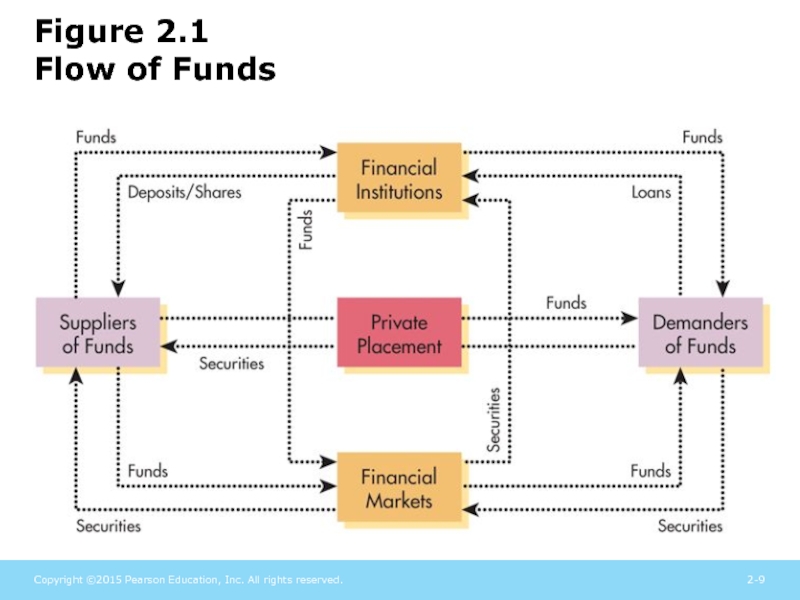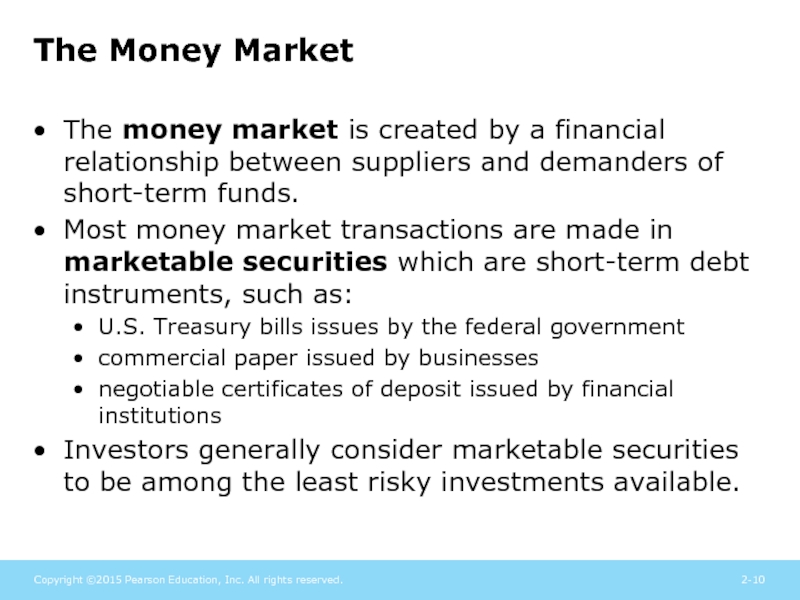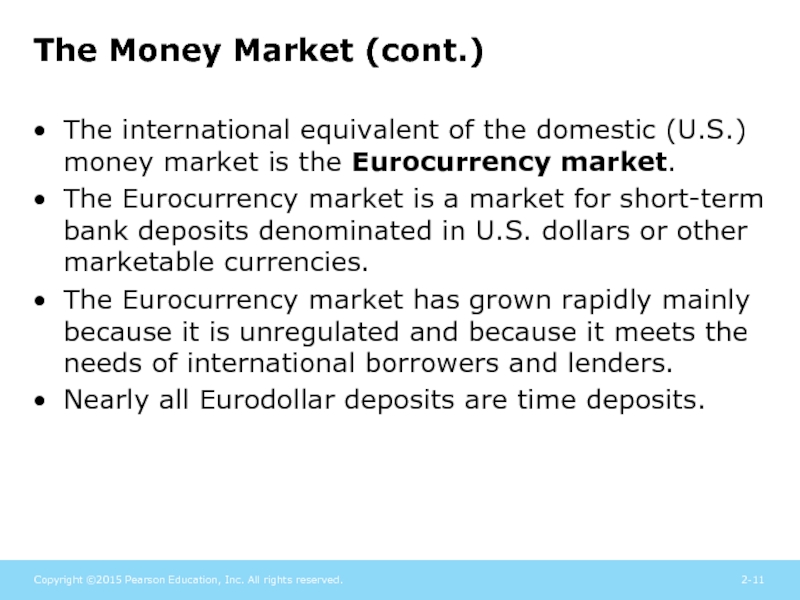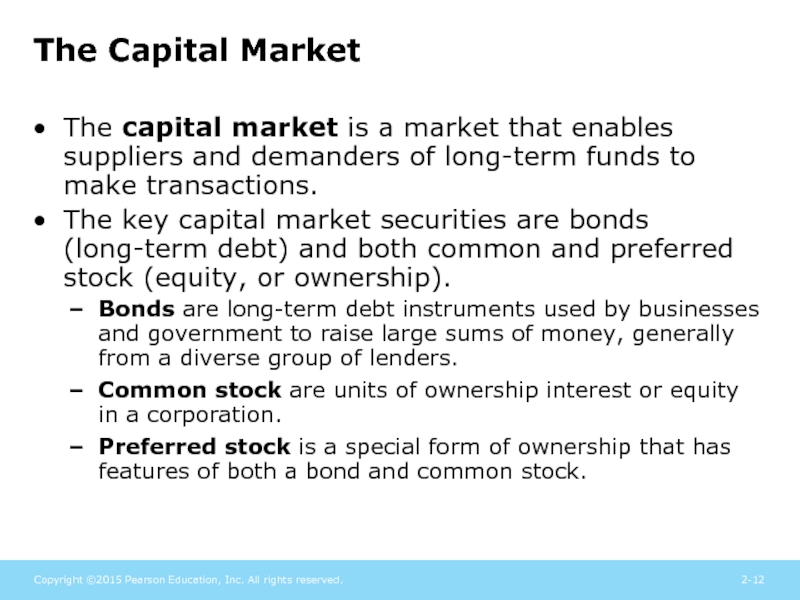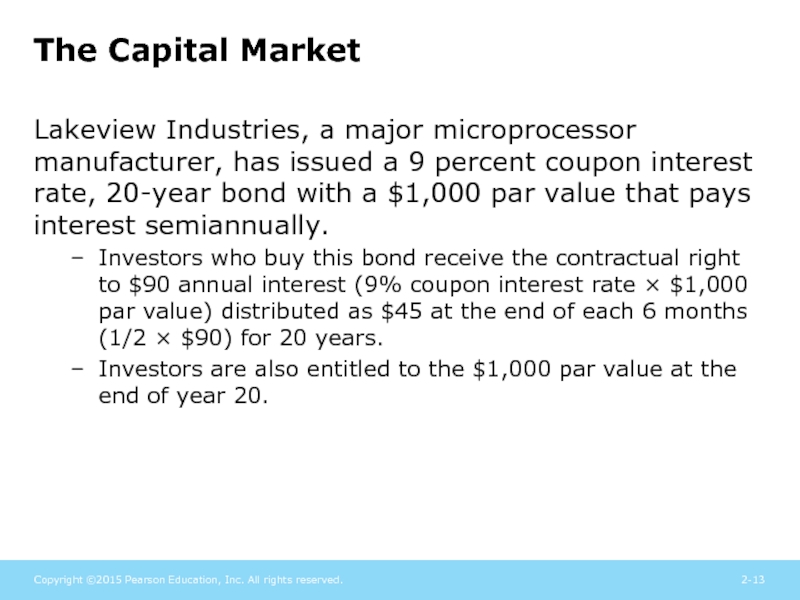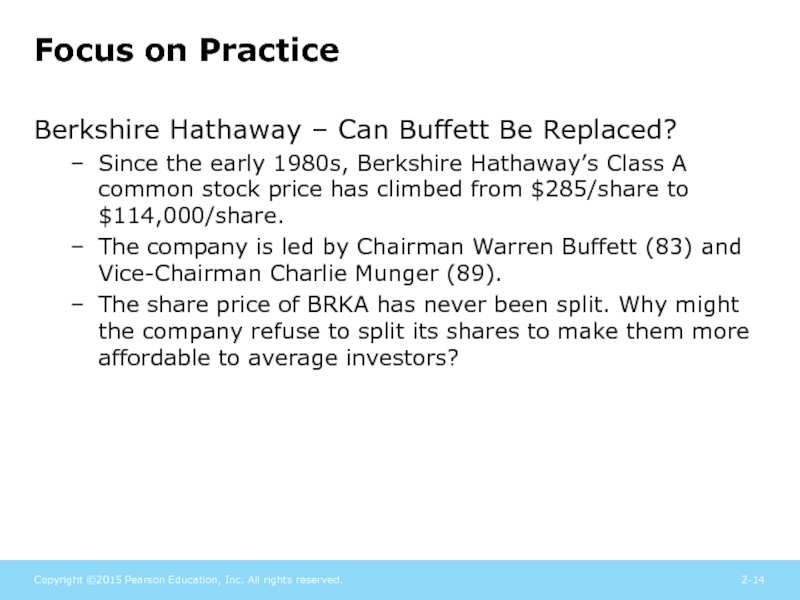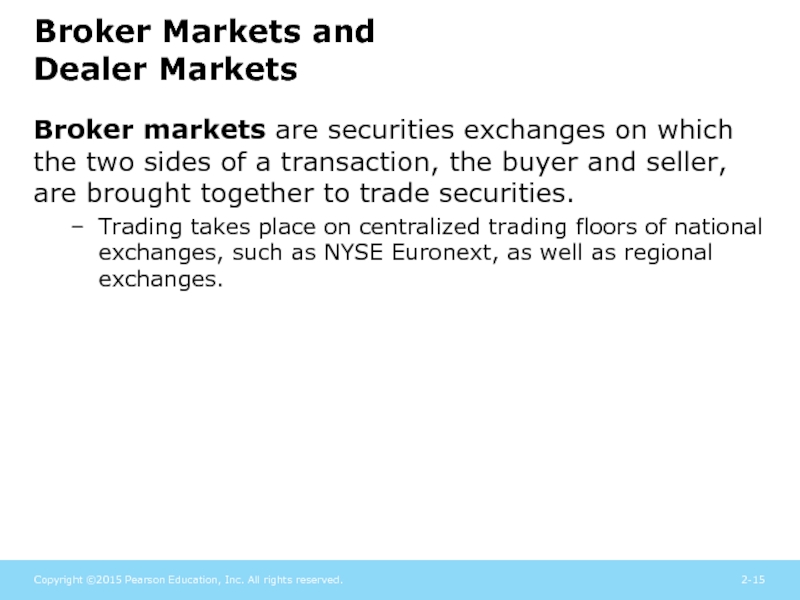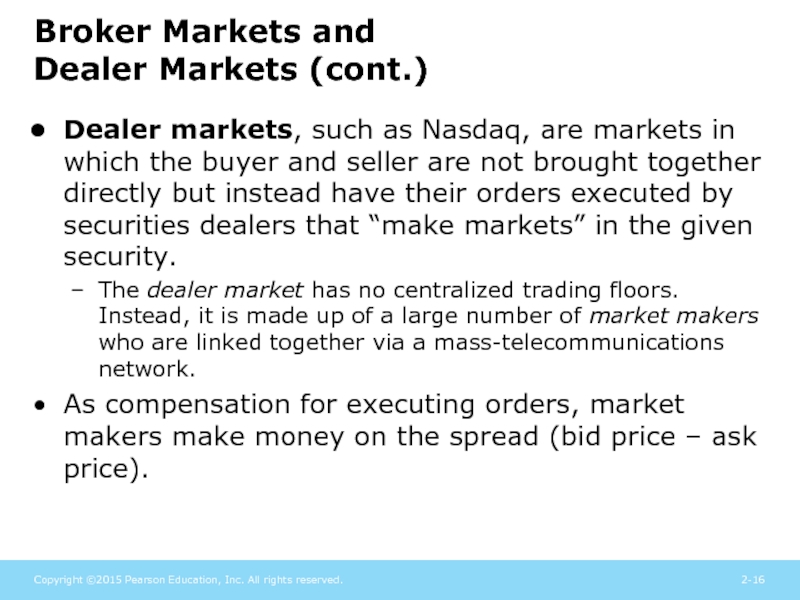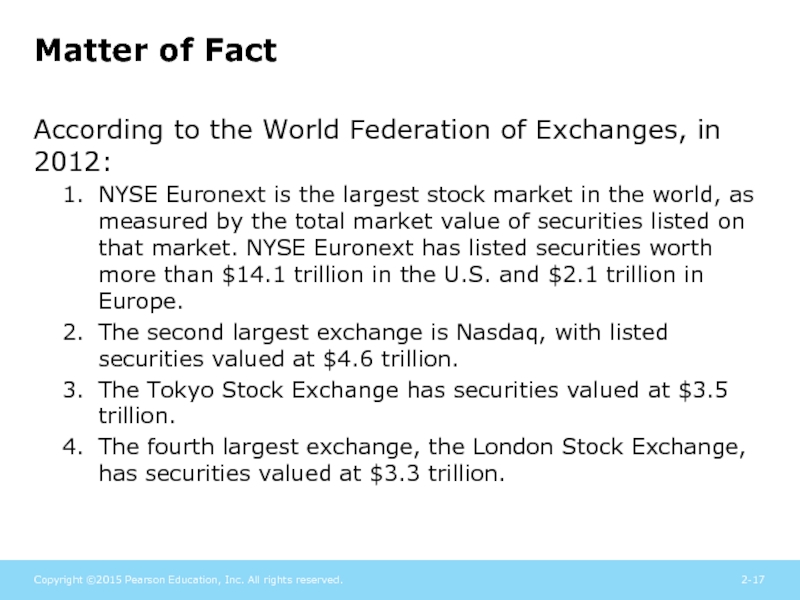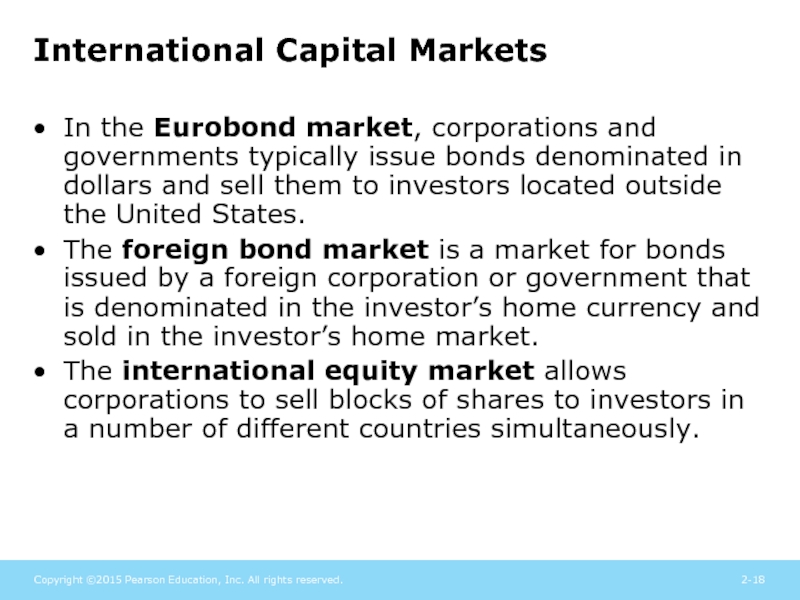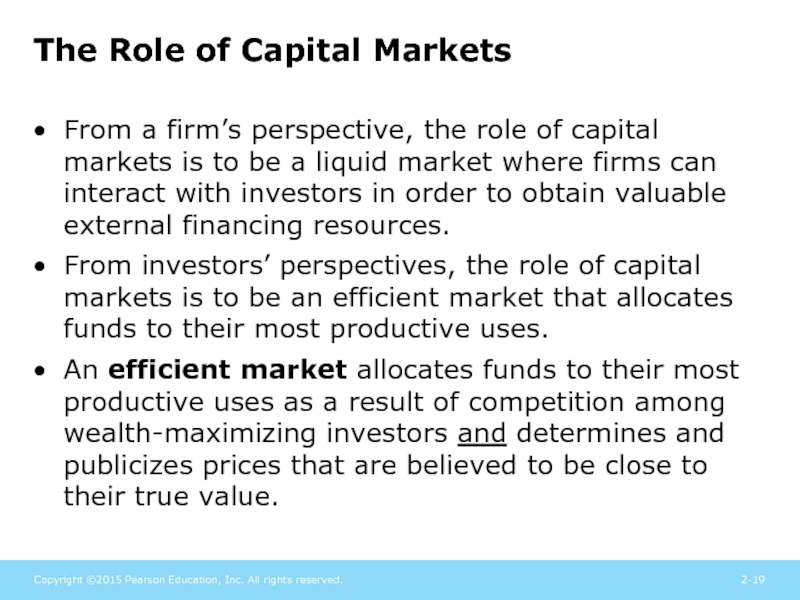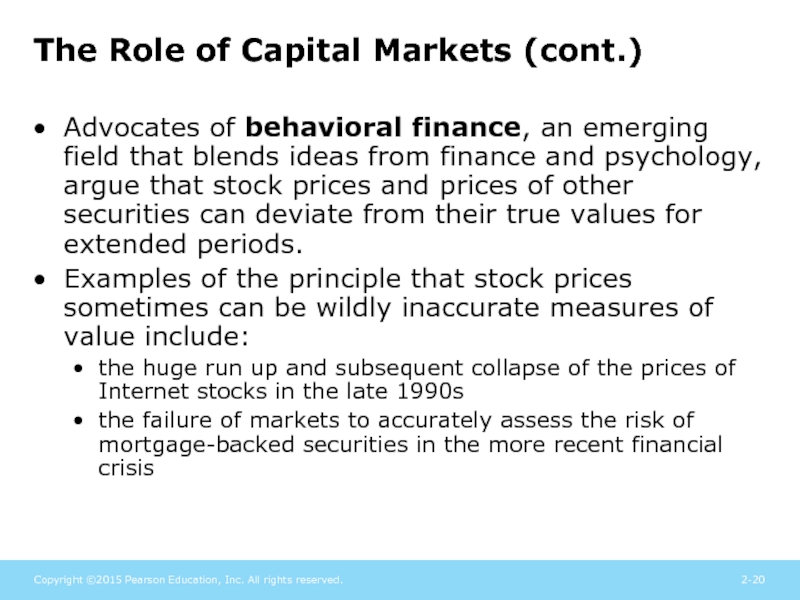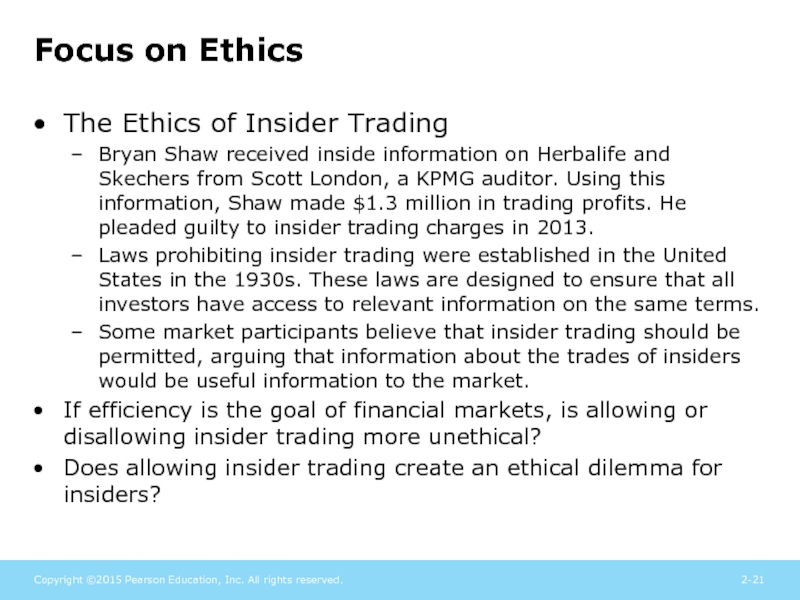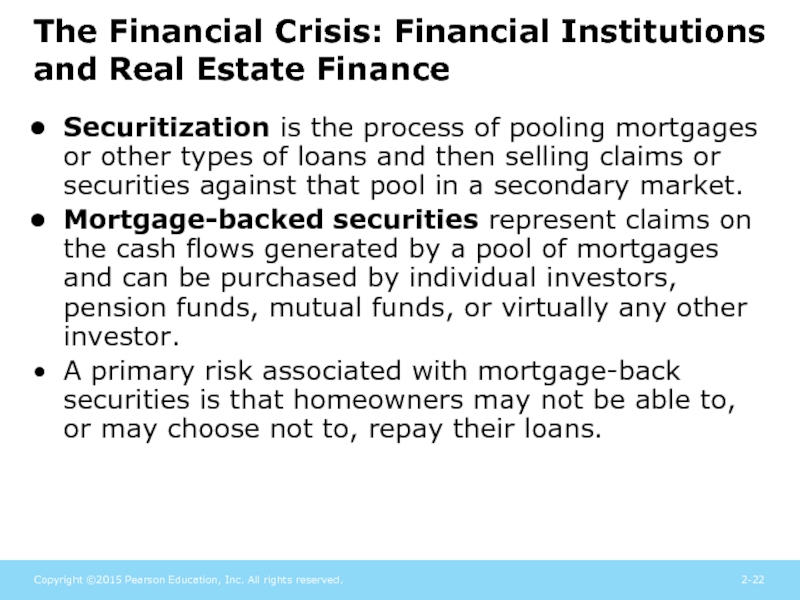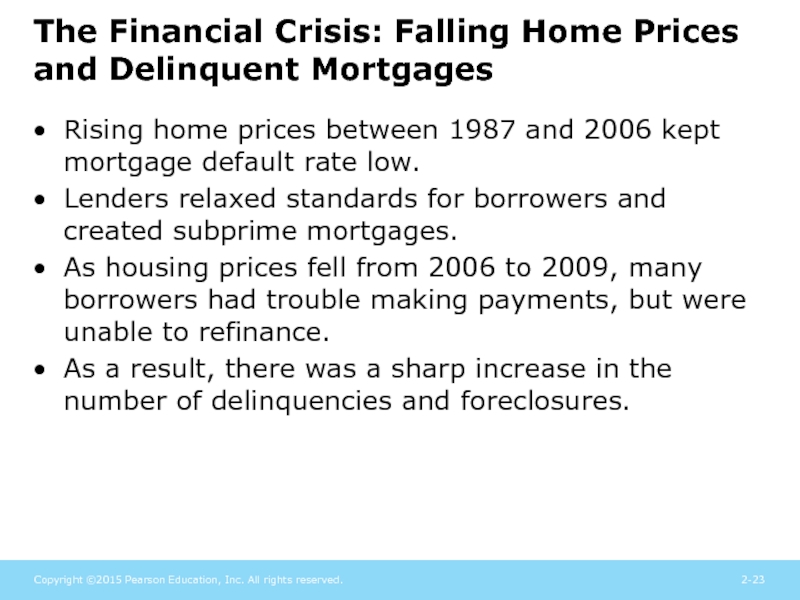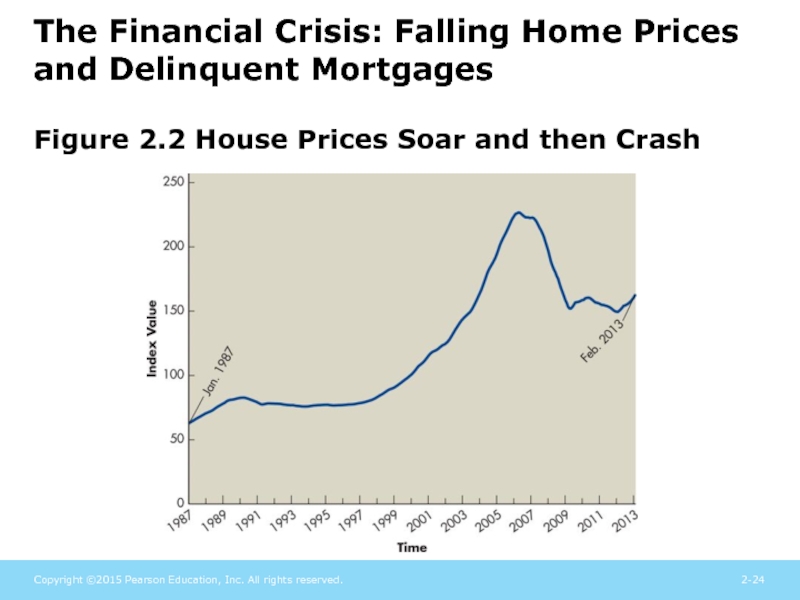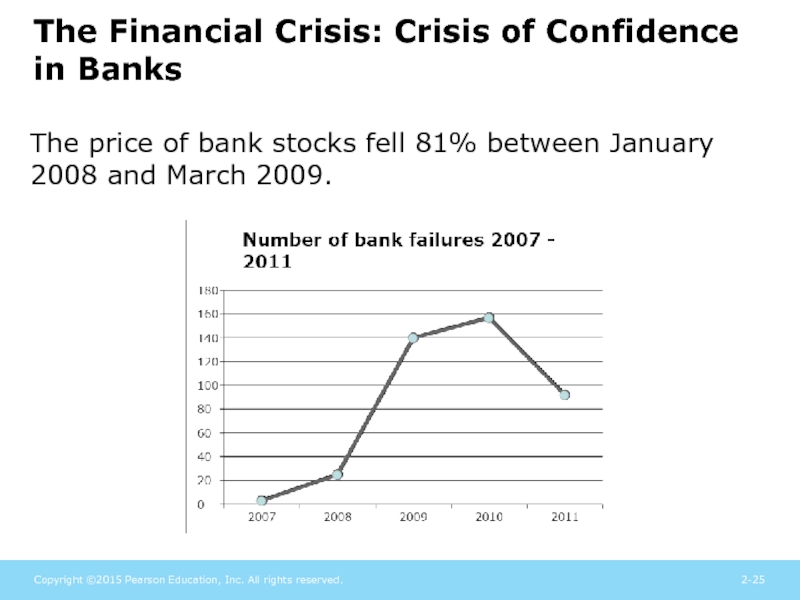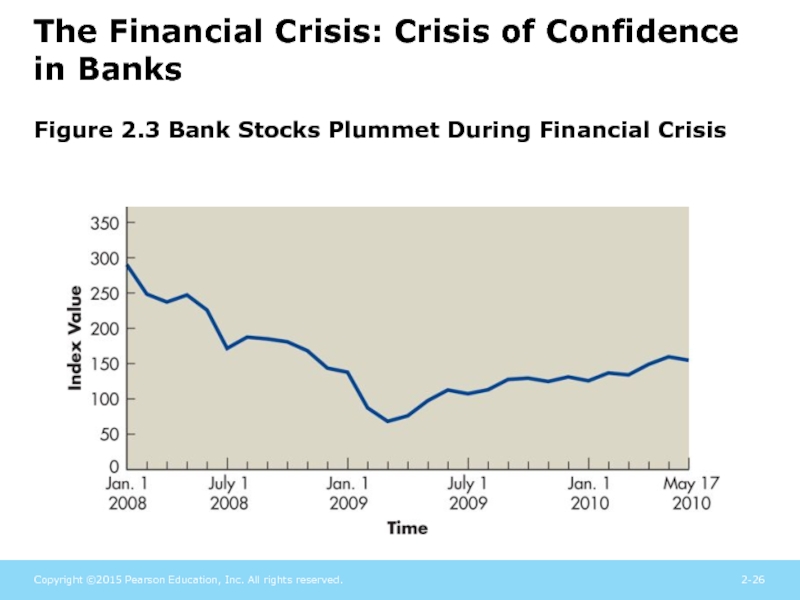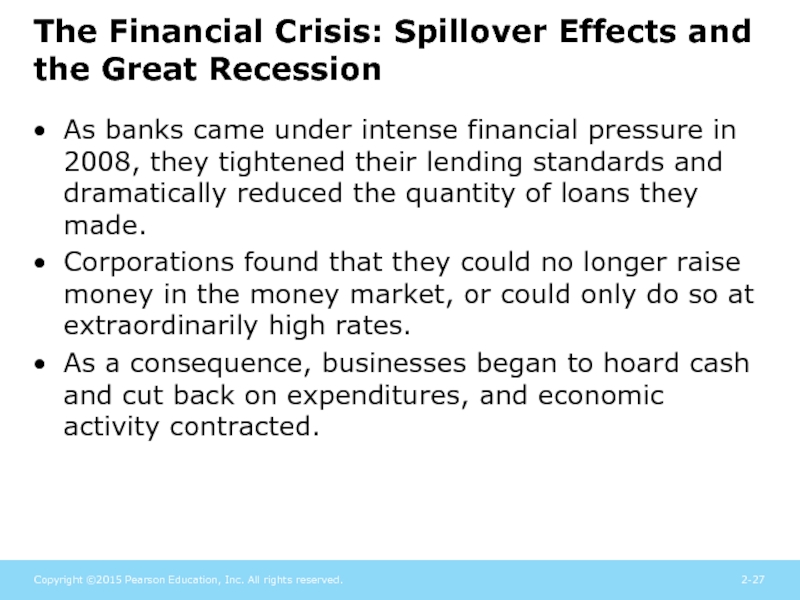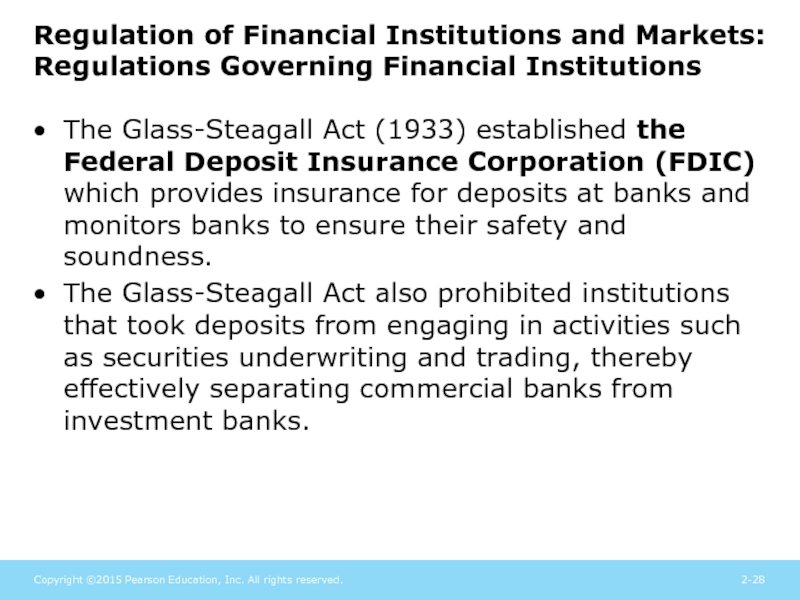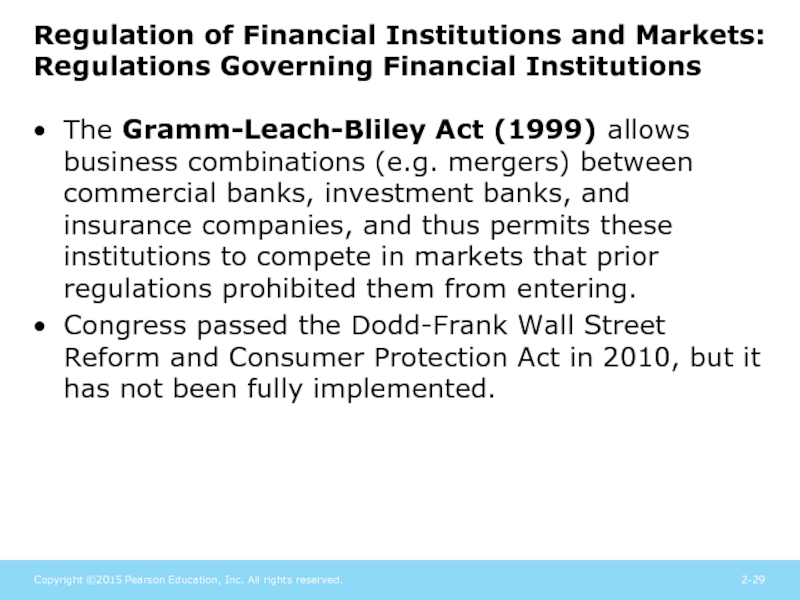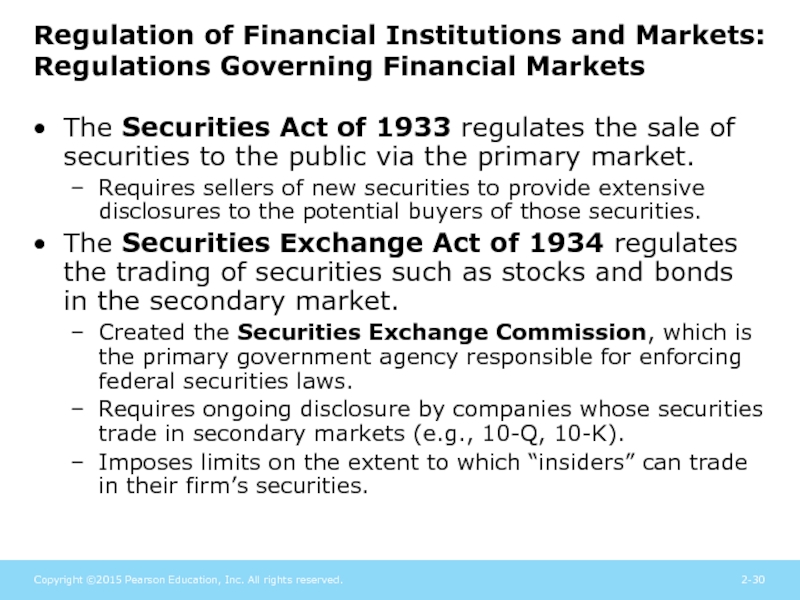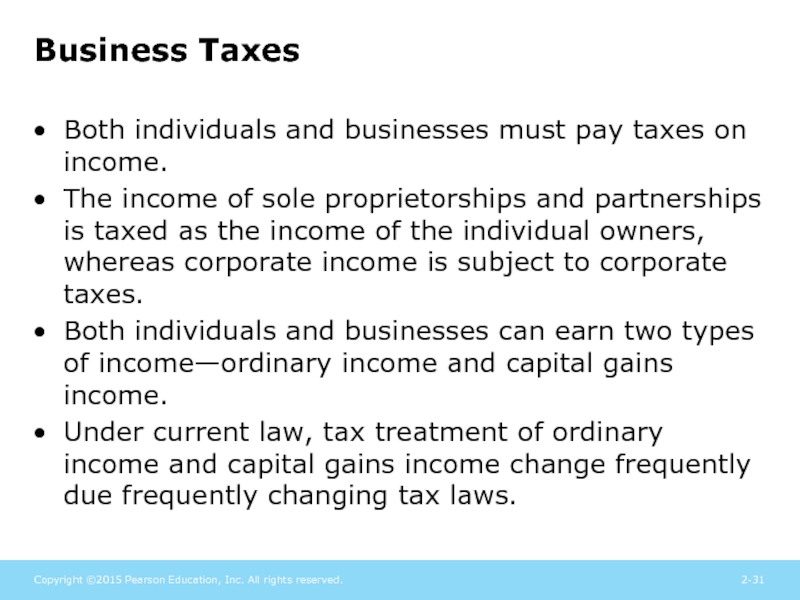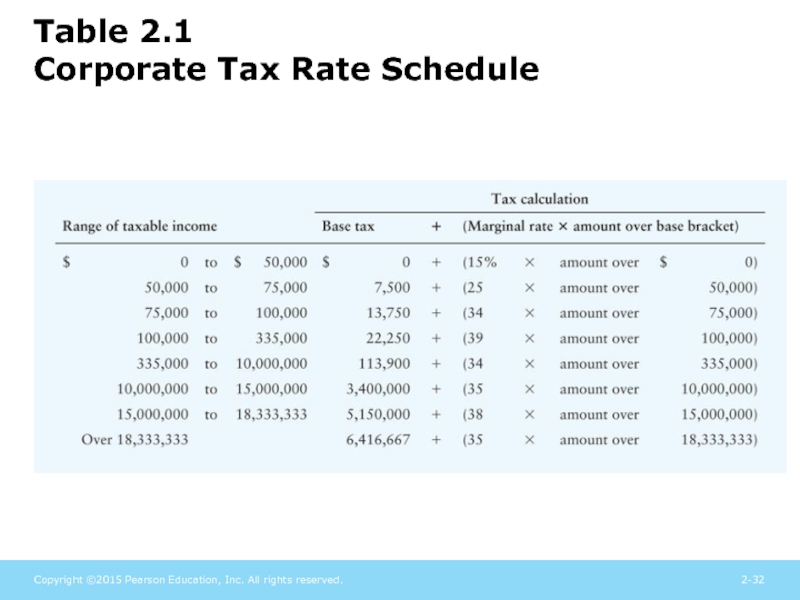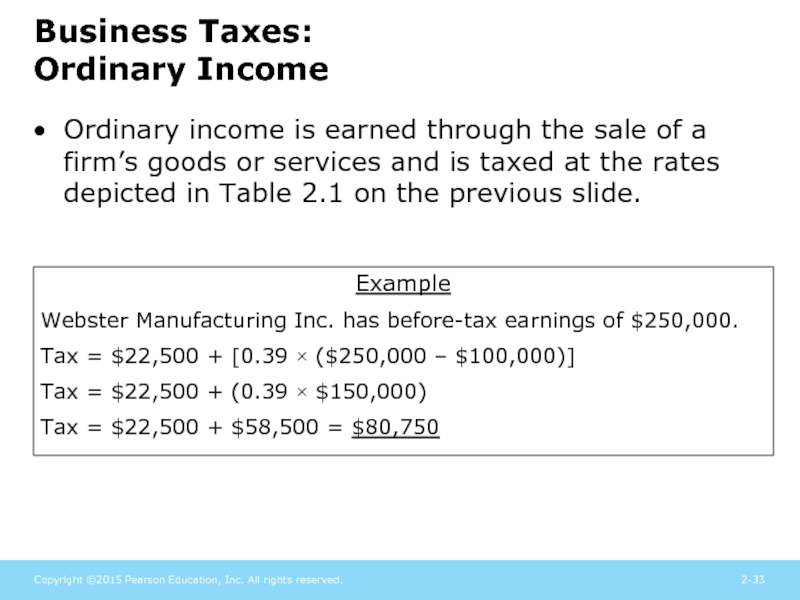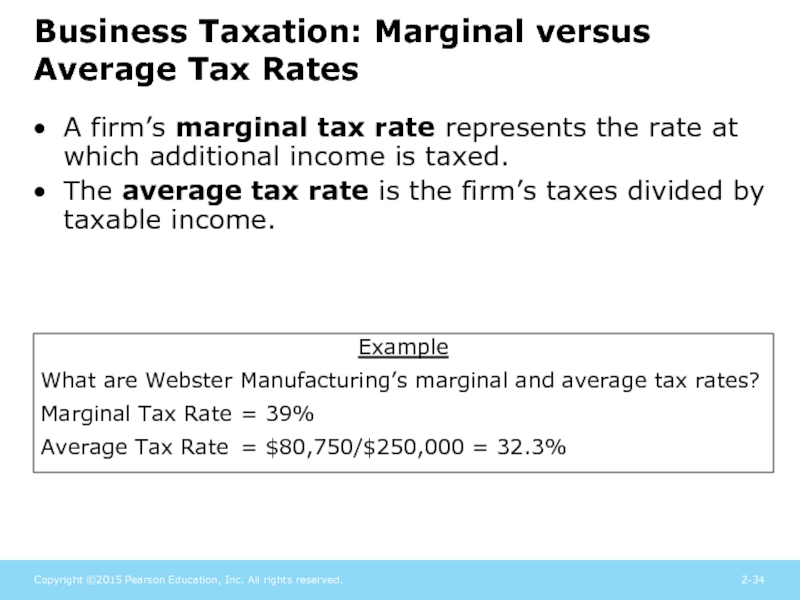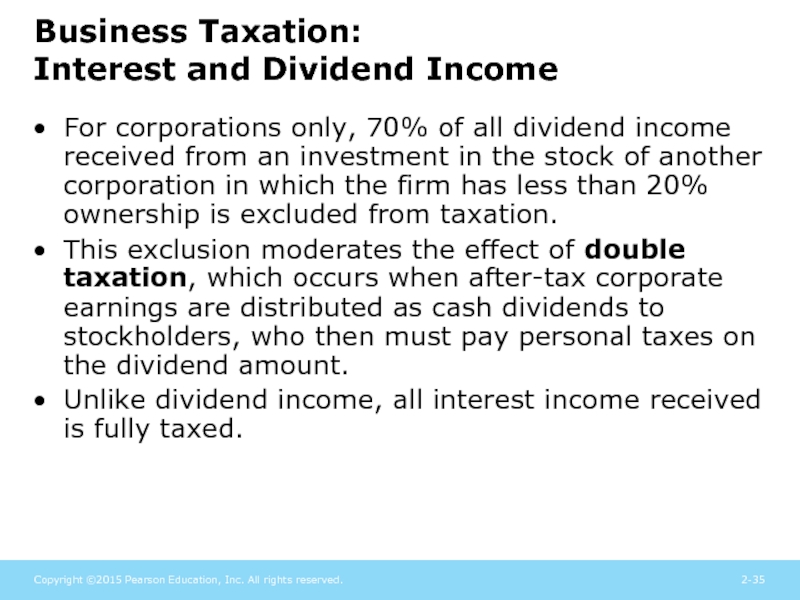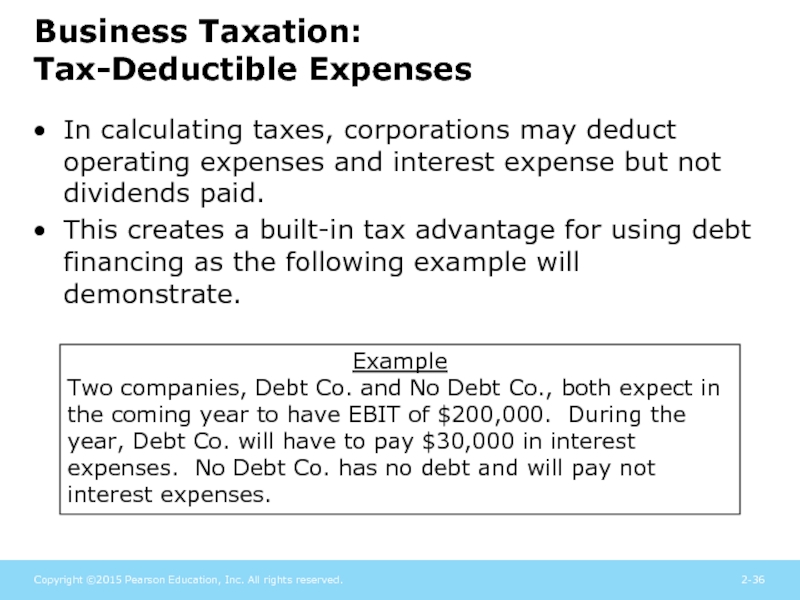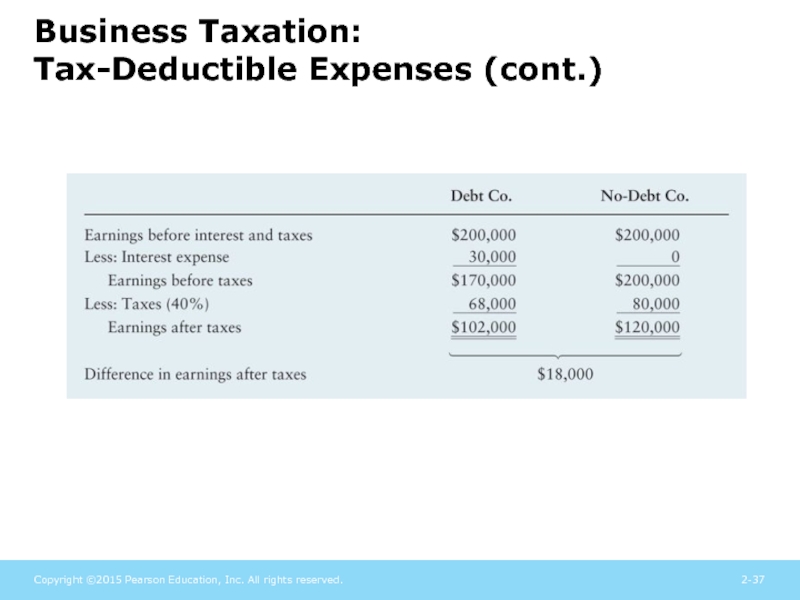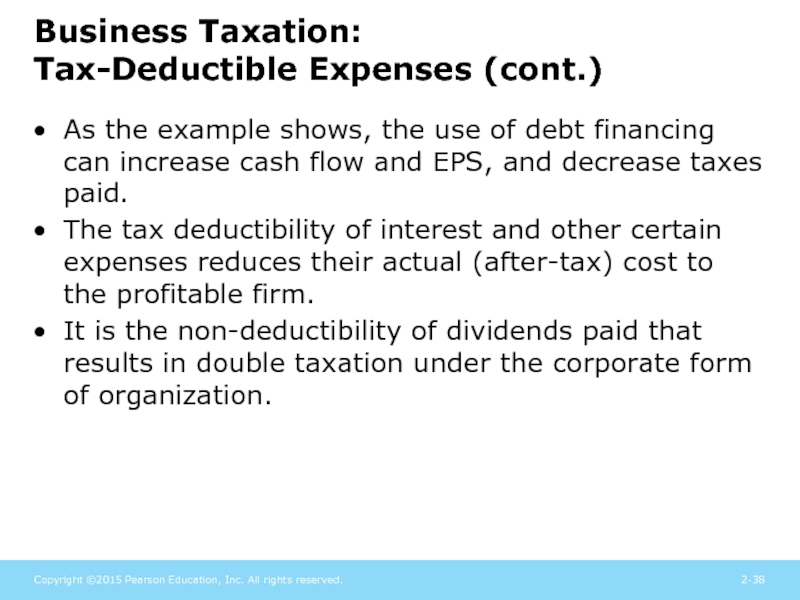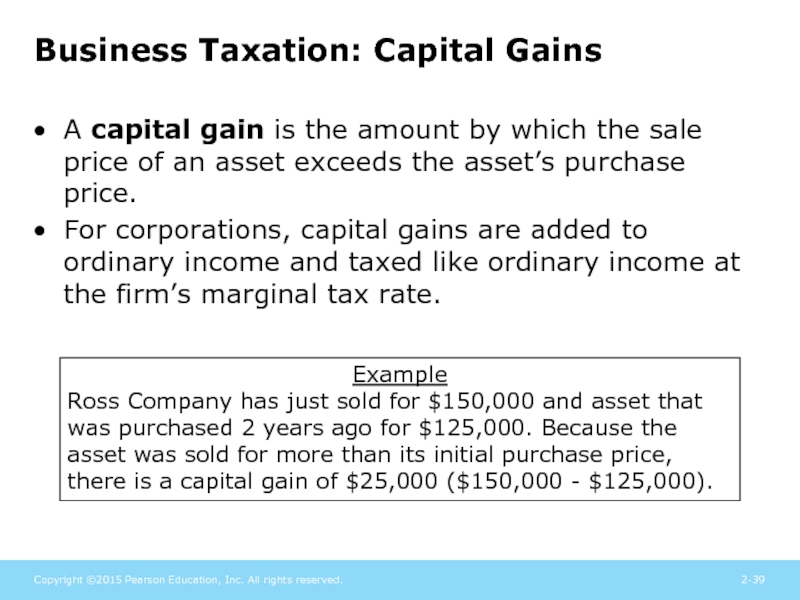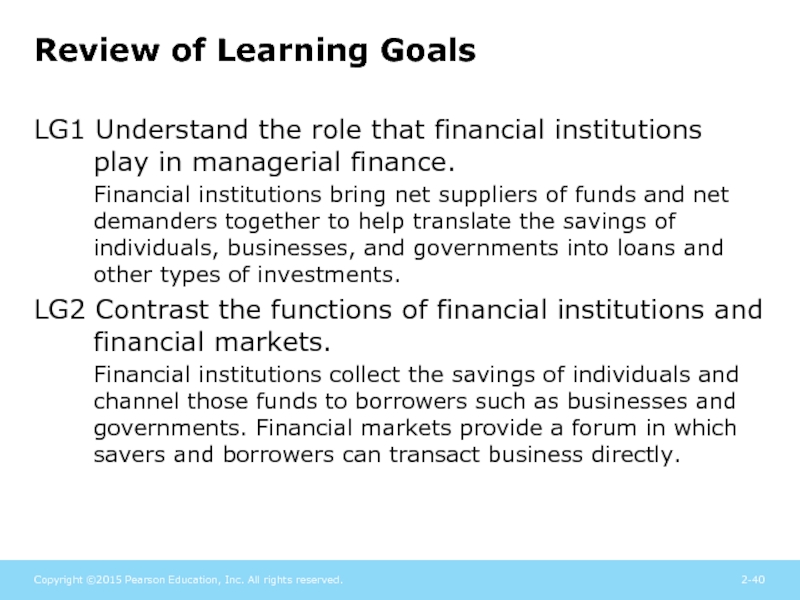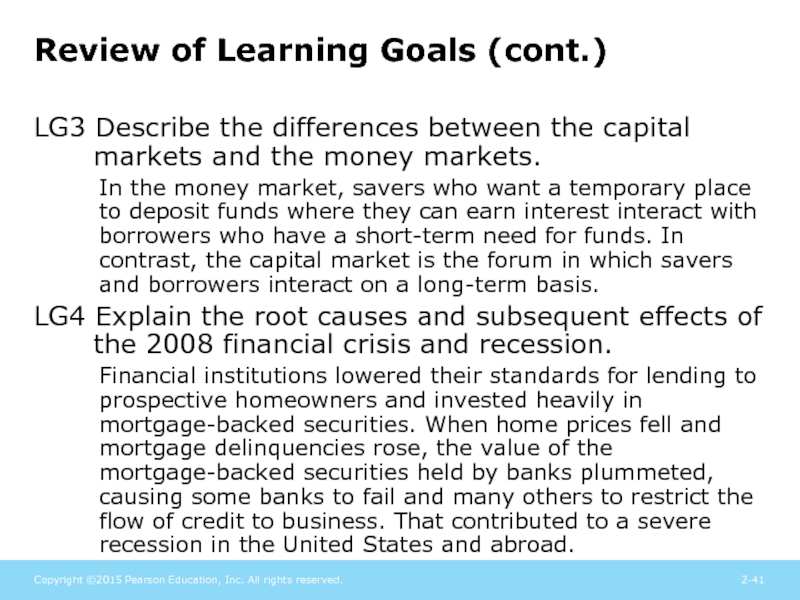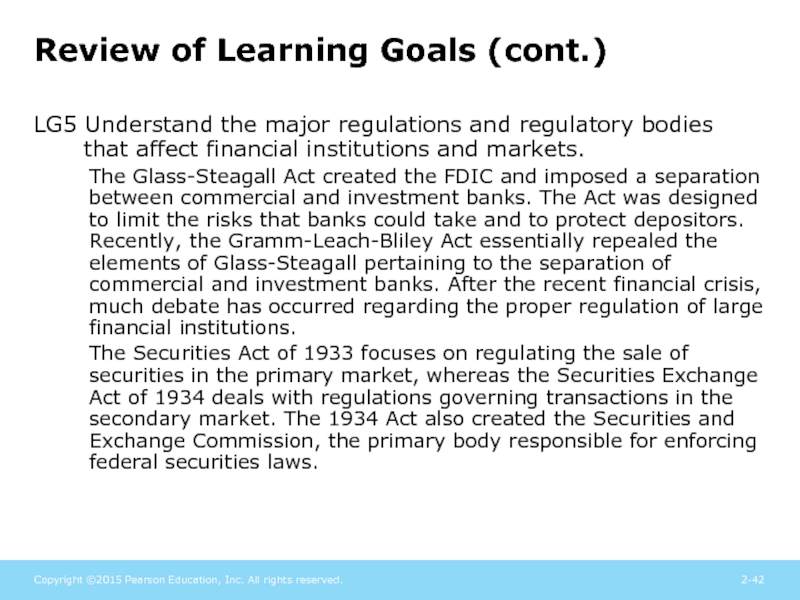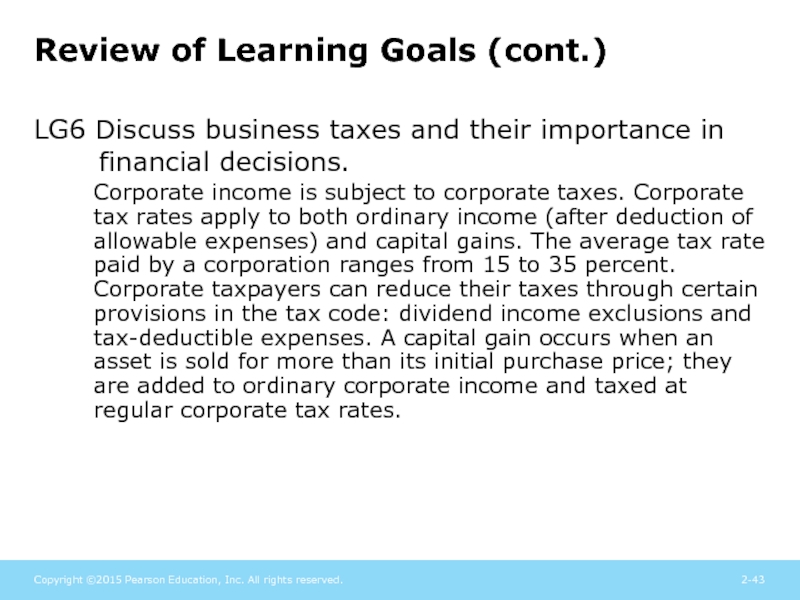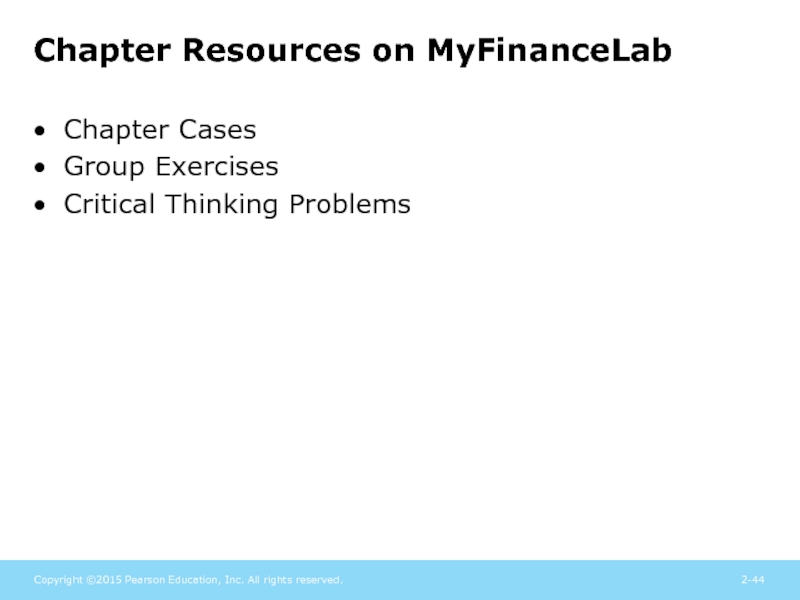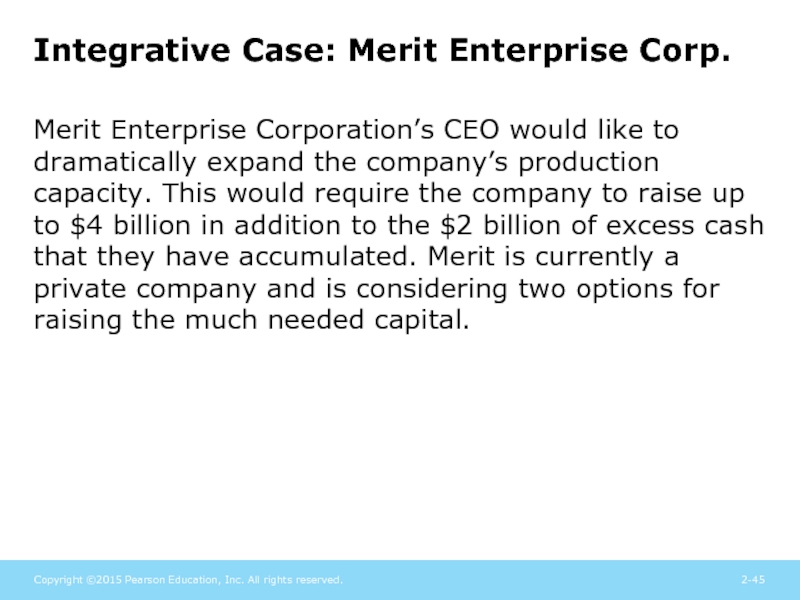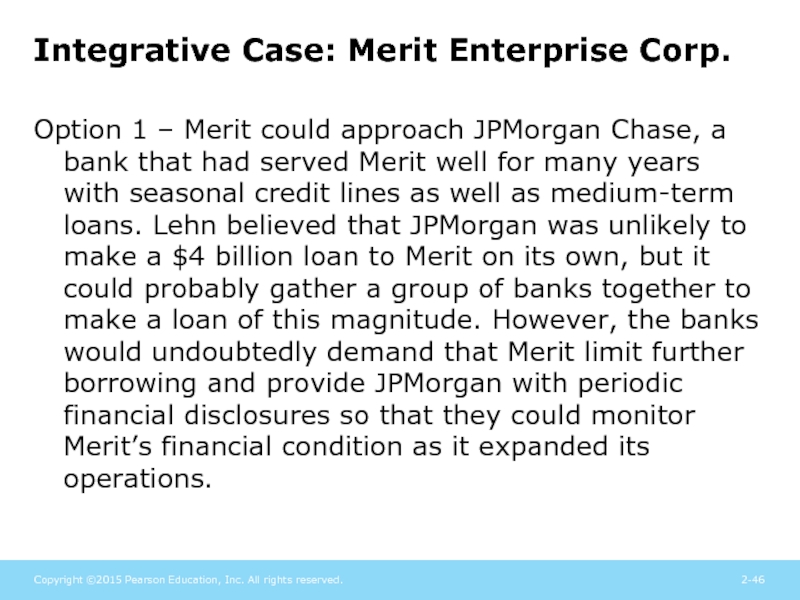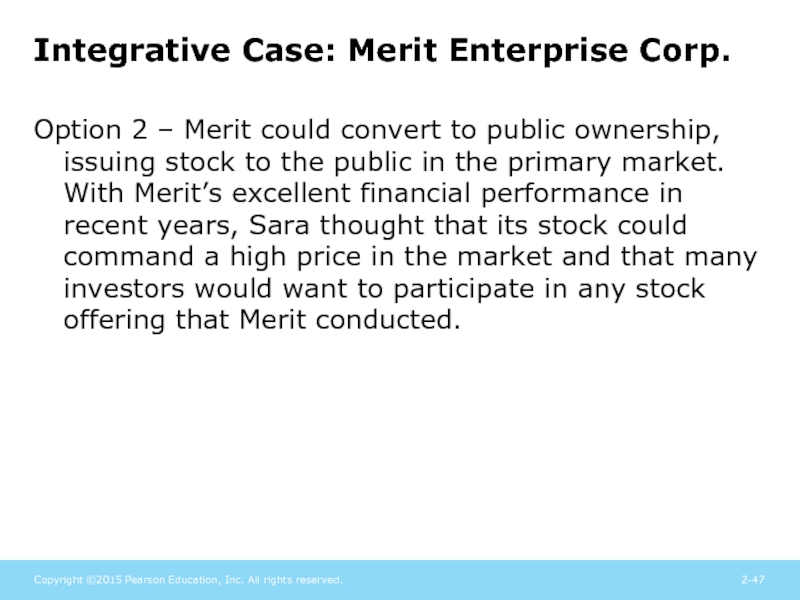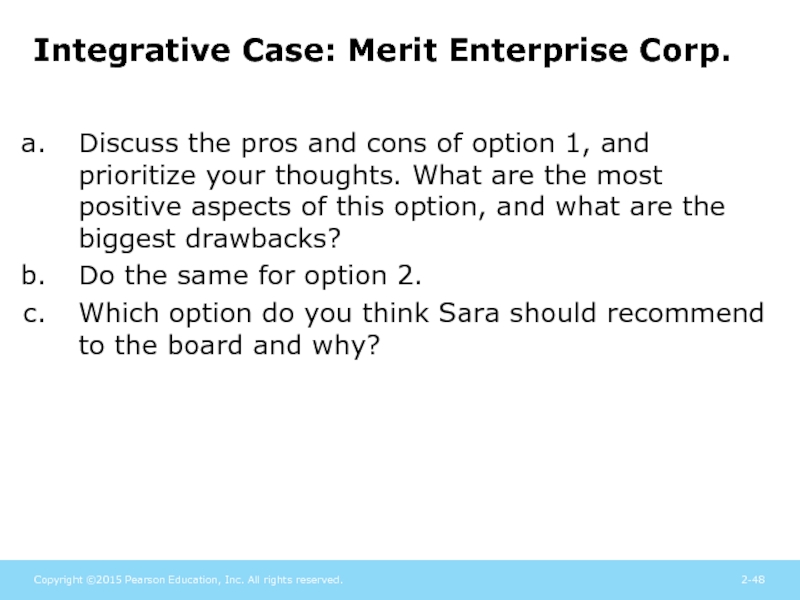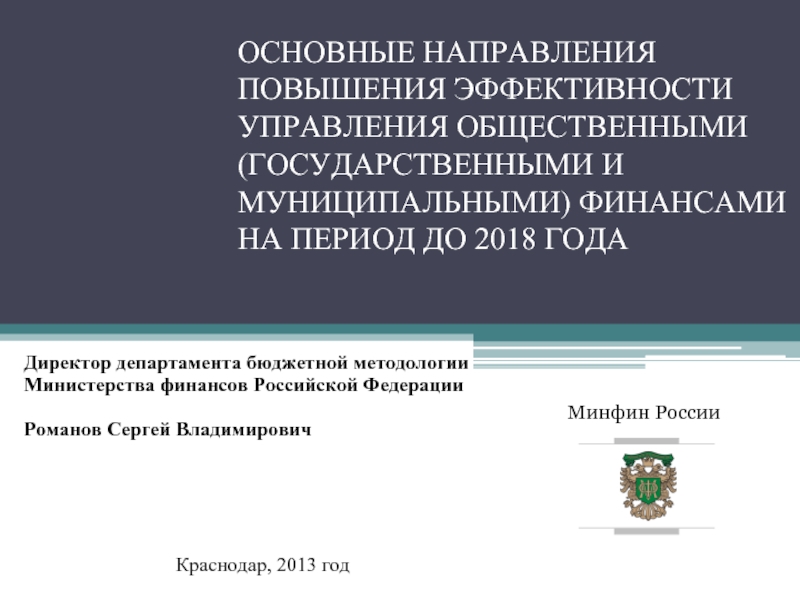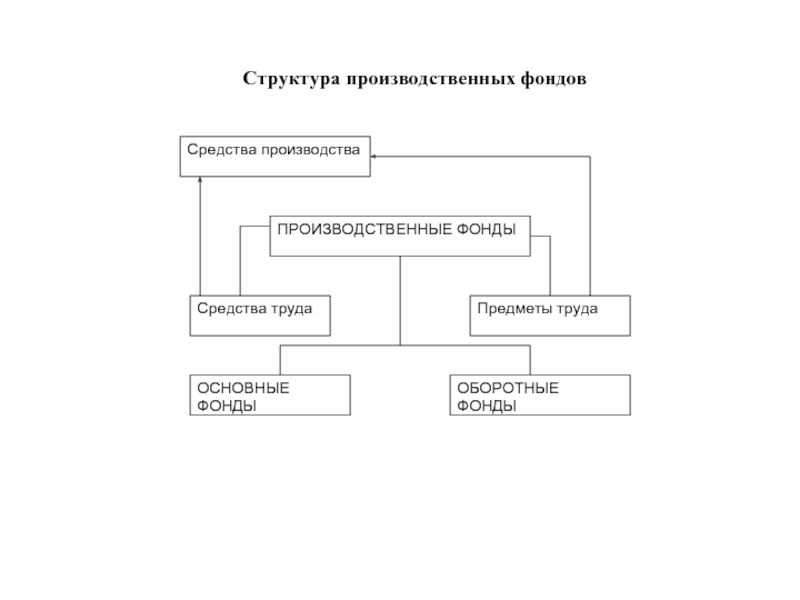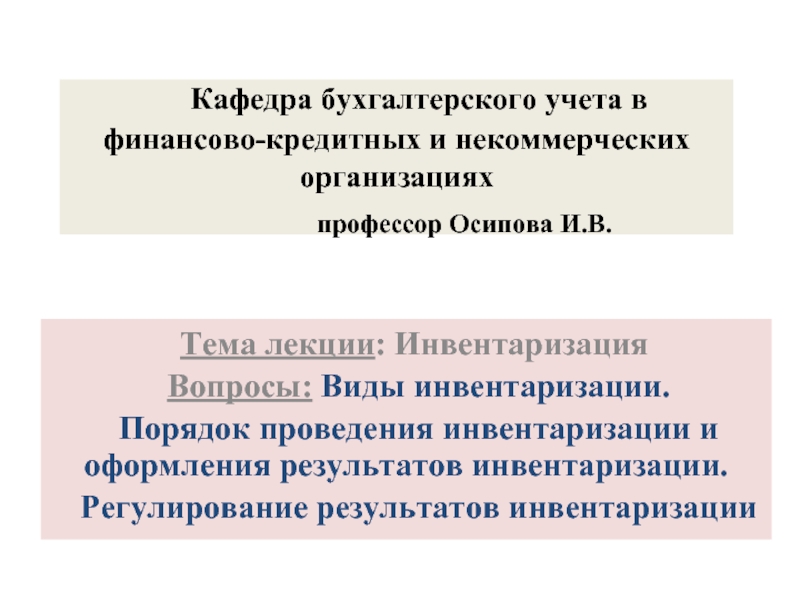- Главная
- Разное
- Дизайн
- Бизнес и предпринимательство
- Аналитика
- Образование
- Развлечения
- Красота и здоровье
- Финансы
- Государство
- Путешествия
- Спорт
- Недвижимость
- Армия
- Графика
- Культурология
- Еда и кулинария
- Лингвистика
- Английский язык
- Астрономия
- Алгебра
- Биология
- География
- Детские презентации
- Информатика
- История
- Литература
- Маркетинг
- Математика
- Медицина
- Менеджмент
- Музыка
- МХК
- Немецкий язык
- ОБЖ
- Обществознание
- Окружающий мир
- Педагогика
- Русский язык
- Технология
- Физика
- Философия
- Химия
- Шаблоны, картинки для презентаций
- Экология
- Экономика
- Юриспруденция
The financial market environment. (Chapter 2) презентация
Содержание
- 1. The financial market environment. (Chapter 2)
- 2. Financial Institutions & Markets Firms that require
- 3. Financial Institutions & Markets: Financial Institutions Financial
- 4. Commercial Banks, Investment Banks, and the Shadow
- 5. Commercial Banks, Investment Banks, and the Shadow
- 6. Matter of Fact Consolidation in the U.S.
- 7. Financial Institutions & Markets: Financial Markets Financial
- 8. Financial Institutions & Markets: Financial Markets (cont.)
- 9. Figure 2.1 Flow of Funds
- 10. The Money Market The money market is
- 11. The Money Market (cont.) The international equivalent
- 12. The Capital Market The capital market is
- 13. The Capital Market Lakeview Industries, a major
- 14. Focus on Practice Berkshire Hathaway – Can
- 15. Broker Markets and Dealer Markets Broker
- 16. Broker Markets and Dealer Markets (cont.)
- 17. Matter of Fact According to the World
- 18. International Capital Markets In the Eurobond market,
- 19. The Role of Capital Markets From a
- 20. The Role of Capital Markets (cont.) Advocates
- 21. Focus on Ethics The Ethics of Insider
- 22. The Financial Crisis: Financial Institutions and Real
- 23. The Financial Crisis: Falling Home Prices and
- 24. The Financial Crisis: Falling Home Prices and
- 25. The Financial Crisis: Crisis of Confidence in
- 26. The Financial Crisis: Crisis of Confidence in
- 27. The Financial Crisis: Spillover Effects and the
- 28. Regulation of Financial Institutions and Markets: Regulations
- 29. Regulation of Financial Institutions and Markets: Regulations
- 30. Regulation of Financial Institutions and Markets: Regulations
- 31. Business Taxes Both individuals and businesses must
- 32. Table 2.1 Corporate Tax Rate Schedule
- 33. Business Taxes: Ordinary Income Ordinary income
- 34. Business Taxation: Marginal versus Average Tax Rates
- 35. Business Taxation: Interest and Dividend Income
- 36. Business Taxation: Tax-Deductible Expenses In calculating
- 37. Business Taxation: Tax-Deductible Expenses (cont.)
- 38. Business Taxation: Tax-Deductible Expenses (cont.) As
- 39. Business Taxation: Capital Gains A capital gain
- 40. Review of Learning Goals LG1 Understand the
- 41. Review of Learning Goals (cont.) LG3 Describe
- 42. Review of Learning Goals (cont.) LG5 Understand
- 43. Review of Learning Goals (cont.) LG6 Discuss
- 44. Chapter Resources on MyFinanceLab Chapter Cases Group Exercises Critical Thinking Problems
- 45. Integrative Case: Merit Enterprise Corp. Merit Enterprise
- 46. Integrative Case: Merit Enterprise Corp. Option 1
- 47. Integrative Case: Merit Enterprise Corp. Option 2
- 48. Integrative Case: Merit Enterprise Corp. Discuss the
Слайд 2Financial Institutions & Markets
Firms that require funds from external sources can
through a financial institution
through financial markets
through private placements
Слайд 3Financial Institutions & Markets: Financial Institutions
Financial institutions are intermediaries that channel
The key suppliers and demanders of funds are individuals, businesses, and governments.
In general, individuals are net suppliers of funds, while businesses and governments are net demanders of funds.
Слайд 4Commercial Banks, Investment Banks, and the Shadow Banking System
Commercial banks are
provide savers with a secure place to invest their funds
offer loans to individual and business borrowers
Investment banks are institutions that:
assist companies in raising capital
advise firms on major transactions such as mergers or financial restructurings
engage in trading and market making activities
Слайд 5Commercial Banks, Investment Banks, and the Shadow Banking System (cont.)
The Glass-Steagall
The shadow banking system describes a group of institutions that:
engage in lending activities, much like traditional banks
but do not accept deposits
are not subject to the same regulations as traditional banks
Слайд 6Matter of Fact
Consolidation in the U.S. Banking Industry:
The U.S. banking industry
According to the FDIC, the number of commercial banks in the United States declined from 11,463 in 1992 to 6,048 in 2013, a decline of 47%.
The decline is concentrated among small, community banks, which larger institutions have been acquiring at a rapid pace.
Слайд 7Financial Institutions & Markets: Financial Markets
Financial markets are forums in which
Transactions in short term marketable securities take place in the money market while transactions in long-term securities take place in the capital market.
A private placement involves the sale of a new security directly to an investor or group of investors.
Most firms, however, raise money through a public offering of securities, which is the sale of either bonds or stocks to the general public.
Слайд 8Financial Institutions & Markets: Financial Markets (cont.)
The primary market is the
Secondary markets are financial markets in which preowned securities (those that are not new issues) are traded.
Слайд 10The Money Market
The money market is created by a financial relationship
Most money market transactions are made in marketable securities which are short-term debt instruments, such as:
U.S. Treasury bills issues by the federal government
commercial paper issued by businesses
negotiable certificates of deposit issued by financial institutions
Investors generally consider marketable securities to be among the least risky investments available.
Слайд 11The Money Market (cont.)
The international equivalent of the domestic (U.S.) money
The Eurocurrency market is a market for short-term bank deposits denominated in U.S. dollars or other marketable currencies.
The Eurocurrency market has grown rapidly mainly because it is unregulated and because it meets the needs of international borrowers and lenders.
Nearly all Eurodollar deposits are time deposits.
Слайд 12The Capital Market
The capital market is a market that enables suppliers
The key capital market securities are bonds (long-term debt) and both common and preferred stock (equity, or ownership).
Bonds are long-term debt instruments used by businesses and government to raise large sums of money, generally from a diverse group of lenders.
Common stock are units of ownership interest or equity in a corporation.
Preferred stock is a special form of ownership that has features of both a bond and common stock.
Слайд 13The Capital Market
Lakeview Industries, a major microprocessor manufacturer, has issued a
Investors who buy this bond receive the contractual right to $90 annual interest (9% coupon interest rate × $1,000 par value) distributed as $45 at the end of each 6 months (1/2 × $90) for 20 years.
Investors are also entitled to the $1,000 par value at the end of year 20.
Слайд 14Focus on Practice
Berkshire Hathaway – Can Buffett Be Replaced?
Since the early
The company is led by Chairman Warren Buffett (83) and Vice-Chairman Charlie Munger (89).
The share price of BRKA has never been split. Why might the company refuse to split its shares to make them more affordable to average investors?
Слайд 15Broker Markets and
Dealer Markets
Broker markets are securities exchanges on which
Trading takes place on centralized trading floors of national exchanges, such as NYSE Euronext, as well as regional exchanges.
Слайд 16Broker Markets and
Dealer Markets (cont.)
Dealer markets, such as Nasdaq, are
The dealer market has no centralized trading floors. Instead, it is made up of a large number of market makers who are linked together via a mass-telecommunications network.
As compensation for executing orders, market makers make money on the spread (bid price – ask price).
Слайд 17Matter of Fact
According to the World Federation of Exchanges, in 2012:
NYSE
The second largest exchange is Nasdaq, with listed securities valued at $4.6 trillion.
The Tokyo Stock Exchange has securities valued at $3.5 trillion.
The fourth largest exchange, the London Stock Exchange, has securities valued at $3.3 trillion.
Слайд 18International Capital Markets
In the Eurobond market, corporations and governments typically issue
The foreign bond market is a market for bonds issued by a foreign corporation or government that is denominated in the investor’s home currency and sold in the investor’s home market.
The international equity market allows corporations to sell blocks of shares to investors in a number of different countries simultaneously.
Слайд 19The Role of Capital Markets
From a firm’s perspective, the role of
From investors’ perspectives, the role of capital markets is to be an efficient market that allocates funds to their most productive uses.
An efficient market allocates funds to their most productive uses as a result of competition among wealth-maximizing investors and determines and publicizes prices that are believed to be close to their true value.
Слайд 20The Role of Capital Markets (cont.)
Advocates of behavioral finance, an emerging
Examples of the principle that stock prices sometimes can be wildly inaccurate measures of value include:
the huge run up and subsequent collapse of the prices of Internet stocks in the late 1990s
the failure of markets to accurately assess the risk of mortgage-backed securities in the more recent financial crisis
Слайд 21Focus on Ethics
The Ethics of Insider Trading
Bryan Shaw received inside information
Laws prohibiting insider trading were established in the United States in the 1930s. These laws are designed to ensure that all investors have access to relevant information on the same terms.
Some market participants believe that insider trading should be permitted, arguing that information about the trades of insiders would be useful information to the market.
If efficiency is the goal of financial markets, is allowing or disallowing insider trading more unethical?
Does allowing insider trading create an ethical dilemma for insiders?
Слайд 22The Financial Crisis: Financial Institutions and Real Estate Finance
Securitization is the
Mortgage-backed securities represent claims on the cash flows generated by a pool of mortgages and can be purchased by individual investors, pension funds, mutual funds, or virtually any other investor.
A primary risk associated with mortgage-back securities is that homeowners may not be able to, or may choose not to, repay their loans.
Слайд 23The Financial Crisis: Falling Home Prices and Delinquent Mortgages
Rising home prices
Lenders relaxed standards for borrowers and created subprime mortgages.
As housing prices fell from 2006 to 2009, many borrowers had trouble making payments, but were unable to refinance.
As a result, there was a sharp increase in the number of delinquencies and foreclosures.
Слайд 24The Financial Crisis: Falling Home Prices and Delinquent Mortgages
Figure 2.2 House
Слайд 25The Financial Crisis: Crisis of Confidence in Banks
The price of bank
Слайд 26The Financial Crisis: Crisis of Confidence in Banks
Figure 2.3 Bank Stocks
Слайд 27The Financial Crisis: Spillover Effects and the Great Recession
As banks came
Corporations found that they could no longer raise money in the money market, or could only do so at extraordinarily high rates.
As a consequence, businesses began to hoard cash and cut back on expenditures, and economic activity contracted.
Слайд 28Regulation of Financial Institutions and Markets: Regulations Governing Financial Institutions
The Glass-Steagall
The Glass-Steagall Act also prohibited institutions that took deposits from engaging in activities such as securities underwriting and trading, thereby effectively separating commercial banks from investment banks.
Слайд 29Regulation of Financial Institutions and Markets: Regulations Governing Financial Institutions
The Gramm-Leach-Bliley
Congress passed the Dodd-Frank Wall Street Reform and Consumer Protection Act in 2010, but it has not been fully implemented.
Слайд 30Regulation of Financial Institutions and Markets: Regulations Governing Financial Markets
The Securities
Requires sellers of new securities to provide extensive disclosures to the potential buyers of those securities.
The Securities Exchange Act of 1934 regulates the trading of securities such as stocks and bonds in the secondary market.
Created the Securities Exchange Commission, which is the primary government agency responsible for enforcing federal securities laws.
Requires ongoing disclosure by companies whose securities trade in secondary markets (e.g., 10-Q, 10-K).
Imposes limits on the extent to which “insiders” can trade in their firm’s securities.
Слайд 31Business Taxes
Both individuals and businesses must pay taxes on income.
The income
Both individuals and businesses can earn two types of income—ordinary income and capital gains income.
Under current law, tax treatment of ordinary income and capital gains income change frequently due frequently changing tax laws.
Слайд 33Business Taxes:
Ordinary Income
Ordinary income is earned through the sale of
Example
Webster Manufacturing Inc. has before-tax earnings of $250,000.
Tax = $22,500 + [0.39 × ($250,000 – $100,000)]
Tax = $22,500 + (0.39 × $150,000)
Tax = $22,500 + $58,500 = $80,750
Слайд 34Business Taxation: Marginal versus Average Tax Rates
A firm’s marginal tax rate
The average tax rate is the firm’s taxes divided by taxable income.
Example
What are Webster Manufacturing’s marginal and average tax rates?
Marginal Tax Rate = 39%
Average Tax Rate = $80,750/$250,000 = 32.3%
Слайд 35Business Taxation:
Interest and Dividend Income
For corporations only, 70% of all
This exclusion moderates the effect of double taxation, which occurs when after-tax corporate earnings are distributed as cash dividends to stockholders, who then must pay personal taxes on the dividend amount.
Unlike dividend income, all interest income received is fully taxed.
Слайд 36Business Taxation:
Tax-Deductible Expenses
In calculating taxes, corporations may deduct operating expenses
This creates a built-in tax advantage for using debt financing as the following example will demonstrate.
Example
Two companies, Debt Co. and No Debt Co., both expect in the coming year to have EBIT of $200,000. During the year, Debt Co. will have to pay $30,000 in interest expenses. No Debt Co. has no debt and will pay not interest expenses.
Слайд 38Business Taxation:
Tax-Deductible Expenses (cont.)
As the example shows, the use of
The tax deductibility of interest and other certain expenses reduces their actual (after-tax) cost to the profitable firm.
It is the non-deductibility of dividends paid that results in double taxation under the corporate form of organization.
Слайд 39Business Taxation: Capital Gains
A capital gain is the amount by which
For corporations, capital gains are added to ordinary income and taxed like ordinary income at the firm’s marginal tax rate.
Example
Ross Company has just sold for $150,000 and asset that was purchased 2 years ago for $125,000. Because the asset was sold for more than its initial purchase price, there is a capital gain of $25,000 ($150,000 - $125,000).
Слайд 40Review of Learning Goals
LG1 Understand the role that financial institutions play
Financial institutions bring net suppliers of funds and net demanders together to help translate the savings of individuals, businesses, and governments into loans and other types of investments.
LG2 Contrast the functions of financial institutions and financial markets.
Financial institutions collect the savings of individuals and channel those funds to borrowers such as businesses and governments. Financial markets provide a forum in which savers and borrowers can transact business directly.
Слайд 41Review of Learning Goals (cont.)
LG3 Describe the differences between the capital
In the money market, savers who want a temporary place to deposit funds where they can earn interest interact with borrowers who have a short-term need for funds. In contrast, the capital market is the forum in which savers and borrowers interact on a long-term basis.
LG4 Explain the root causes and subsequent effects of the 2008 financial crisis and recession.
Financial institutions lowered their standards for lending to prospective homeowners and invested heavily in mortgage-backed securities. When home prices fell and mortgage delinquencies rose, the value of the mortgage-backed securities held by banks plummeted, causing some banks to fail and many others to restrict the flow of credit to business. That contributed to a severe recession in the United States and abroad.
Слайд 42Review of Learning Goals (cont.)
LG5 Understand the major regulations and regulatory
The Glass-Steagall Act created the FDIC and imposed a separation between commercial and investment banks. The Act was designed to limit the risks that banks could take and to protect depositors. Recently, the Gramm-Leach-Bliley Act essentially repealed the elements of Glass-Steagall pertaining to the separation of commercial and investment banks. After the recent financial crisis, much debate has occurred regarding the proper regulation of large financial institutions.
The Securities Act of 1933 focuses on regulating the sale of securities in the primary market, whereas the Securities Exchange Act of 1934 deals with regulations governing transactions in the secondary market. The 1934 Act also created the Securities and Exchange Commission, the primary body responsible for enforcing federal securities laws.
Слайд 43Review of Learning Goals (cont.)
LG6 Discuss business taxes and their importance
Corporate income is subject to corporate taxes. Corporate tax rates apply to both ordinary income (after deduction of allowable expenses) and capital gains. The average tax rate paid by a corporation ranges from 15 to 35 percent. Corporate taxpayers can reduce their taxes through certain provisions in the tax code: dividend income exclusions and tax-deductible expenses. A capital gain occurs when an asset is sold for more than its initial purchase price; they are added to ordinary corporate income and taxed at regular corporate tax rates.
Слайд 45Integrative Case: Merit Enterprise Corp.
Merit Enterprise Corporation’s CEO would like to
Слайд 46Integrative Case: Merit Enterprise Corp.
Option 1 – Merit could approach JPMorgan
Слайд 47Integrative Case: Merit Enterprise Corp.
Option 2 – Merit could convert to
Слайд 48Integrative Case: Merit Enterprise Corp.
Discuss the pros and cons of option
Do the same for option 2.
Which option do you think Sara should recommend to the board and why?
